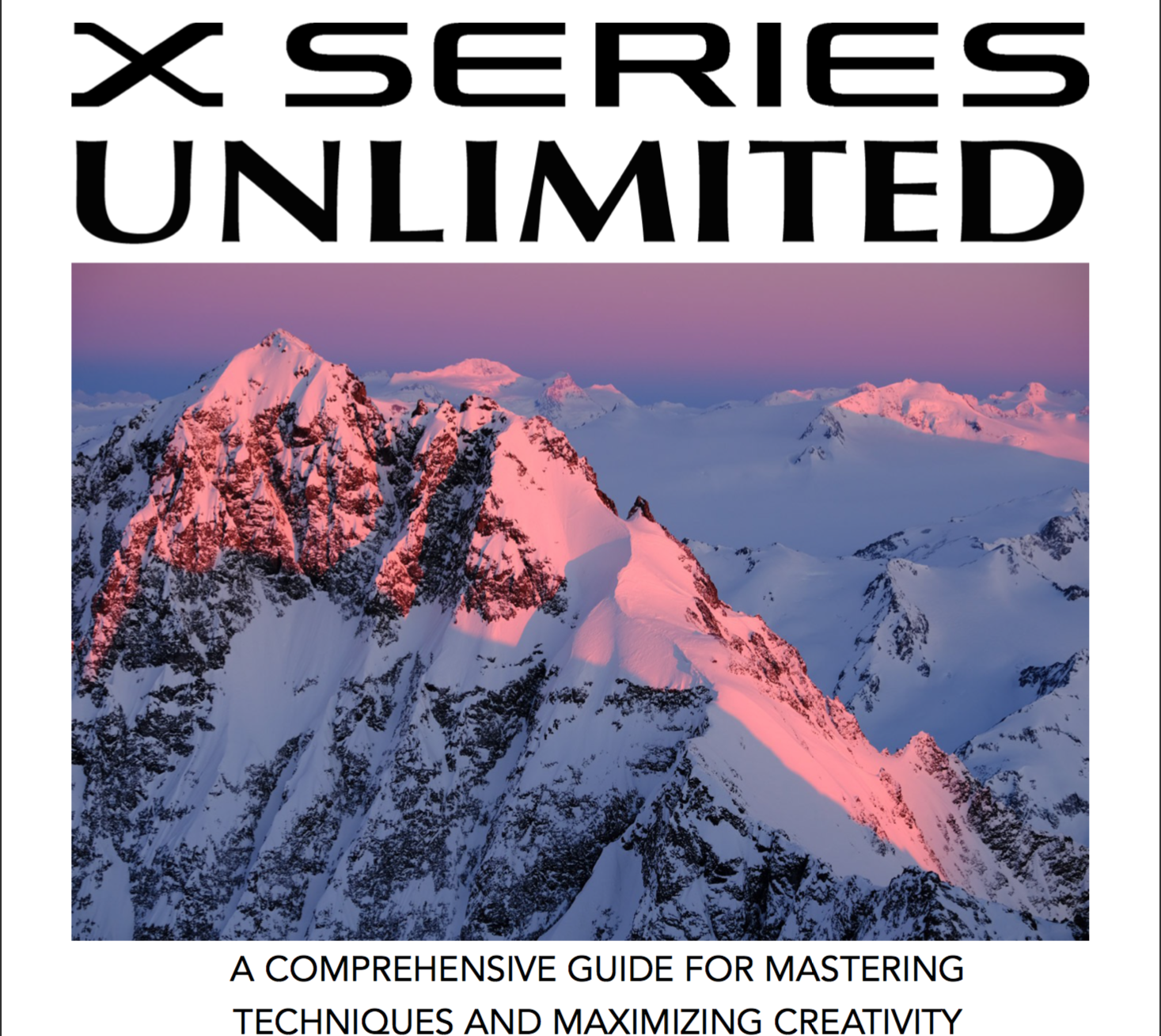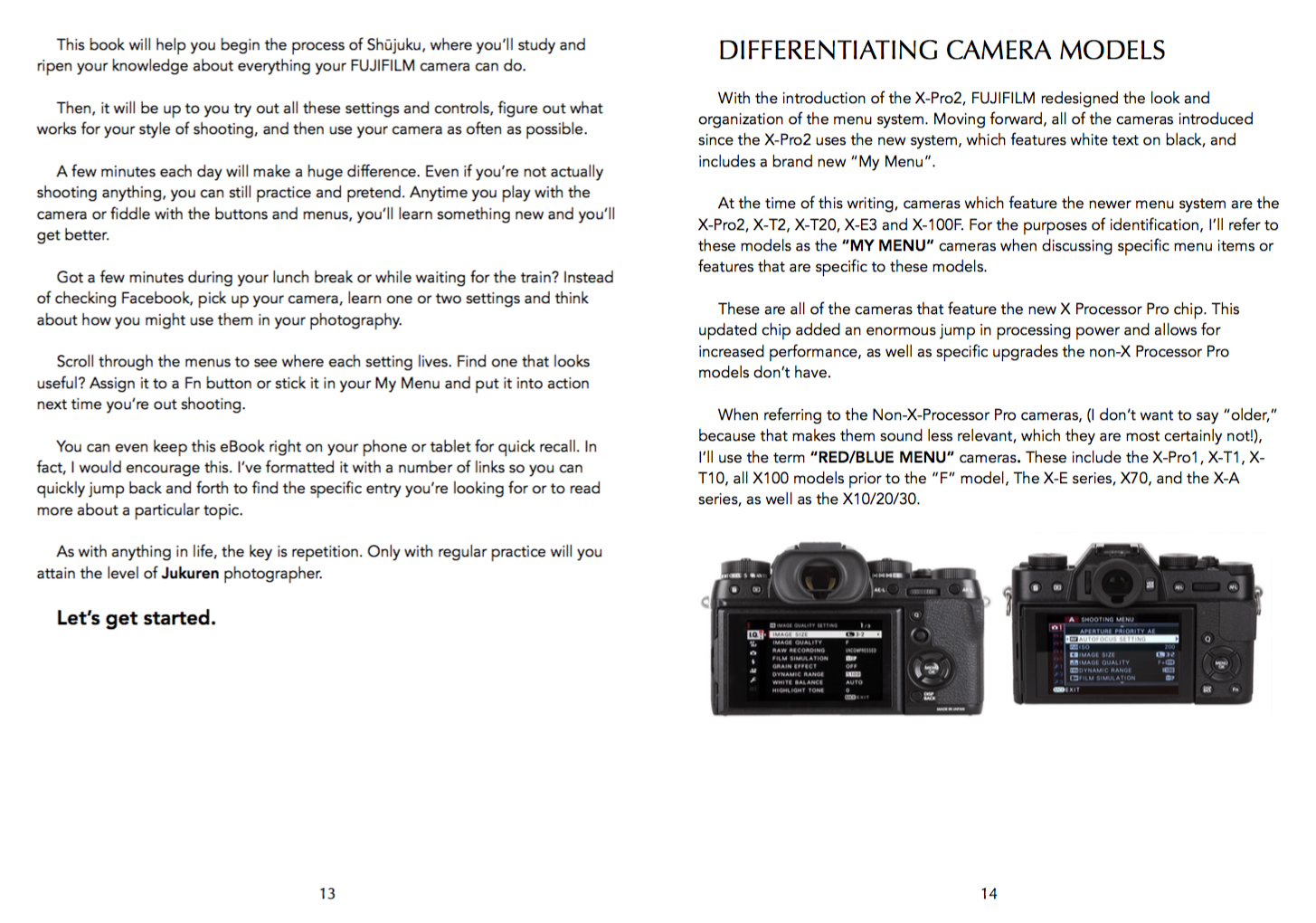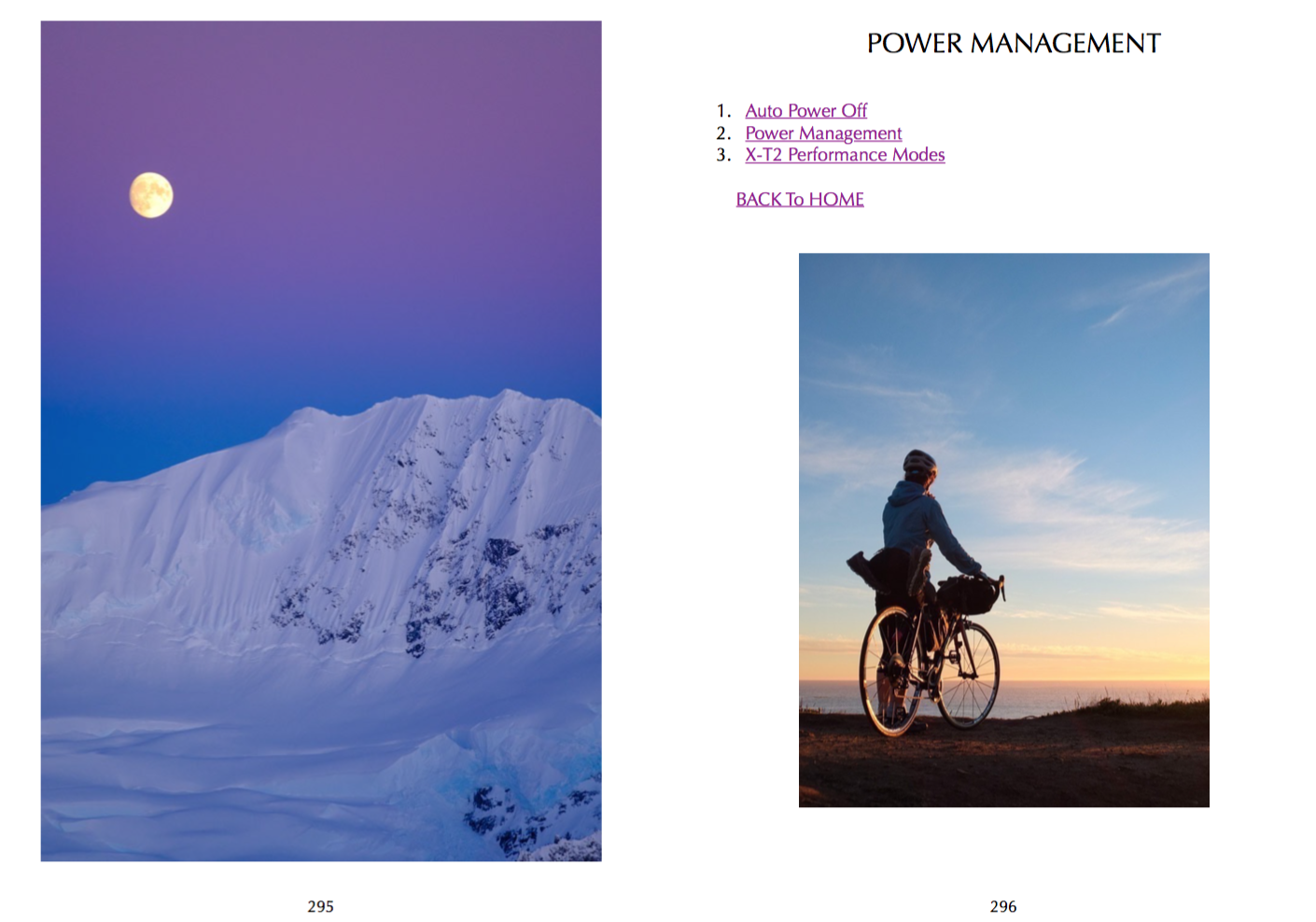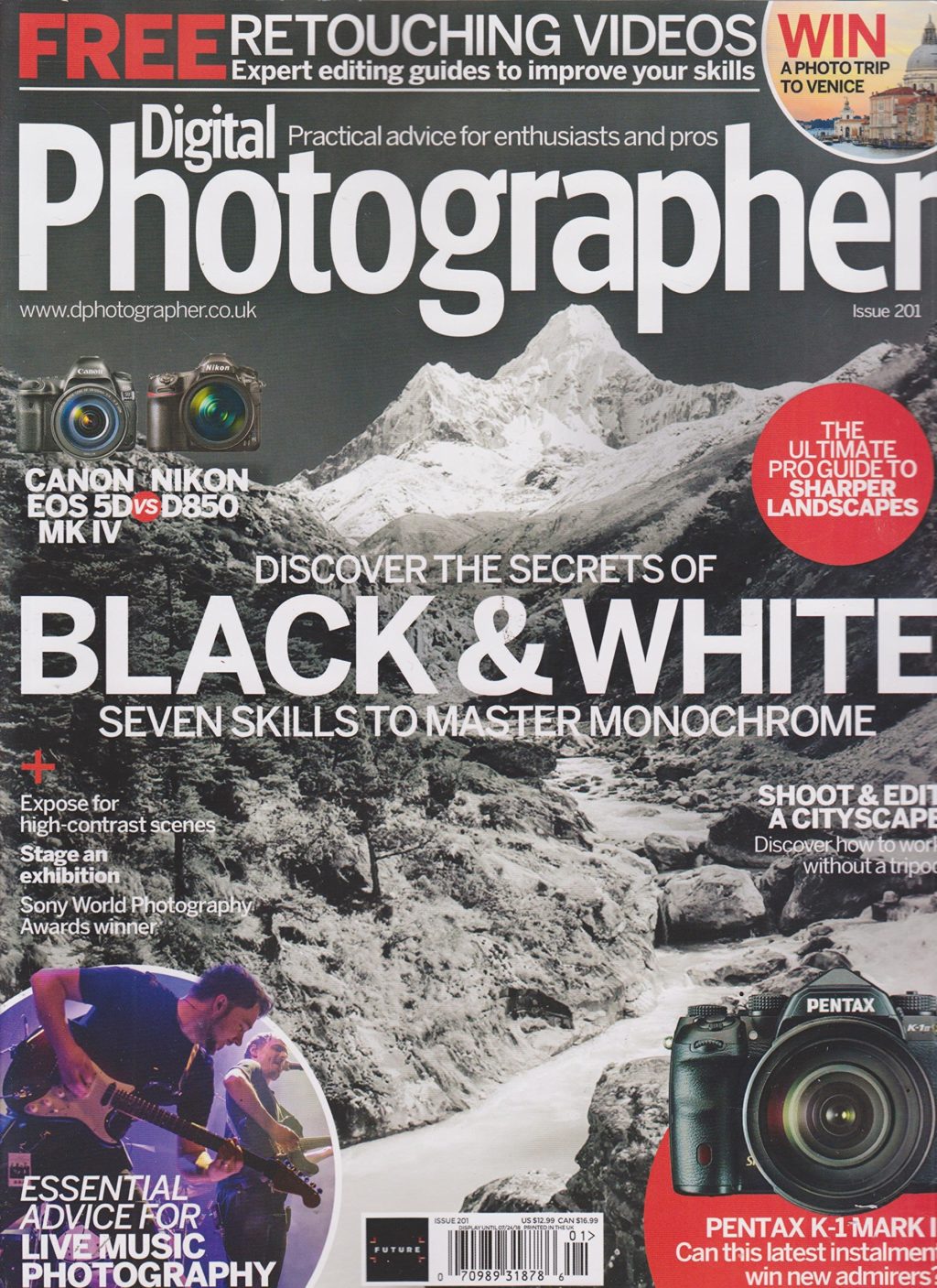RTFM as the old cliche goes. For those not up on their acronyms, RTFM means “Read The Flipping Manual.” The F in the phrase can, of course, be substituted for something a little more vulgar but you get a general idea. Cliches, of course, are often based in fact, and the fact is that very few of us read the flipping manual for anything, let alone that expensive high tech camera we just bought. Very often camera manuals are staid dull affairs translated without flair from their original Japanese. For that reason, there is a whole sub-genre of books out there that tell you in much clearer terms how to use your camera. One such book is X-Series Unlimited by Dan Bailey.
The Fuji X Series Book
As the name suggests X-Series Unlimited deals with the Fuji X series. It does not concentrate on one specific camera but the entire Fuji range including their past cameras back to the X100. Whilst that might sound like a bad idea, so uniform is Fuji’s design philosophy that there is a huge range of commonality between all the cameras. Dan Bailey has done an excellent job of separating the areas where cameras differ whilst highlighting commonality.

The book is well laid out with a comprehensive Table of Contents at the beginning, all hyperlinked allowing you to quickly go to a specific topic. The first sections deal with the Nuts and Bolts of the X-Series cameras and in particular highlights some of the features that make Fuji cameras stand out from others. These include the film modes and the T Mode. It also deals with firmware updates, something a lot of people are nervous about. Here Dan explains clearly why it's important to do your firmware updates and takes a little of the mystic out of doing it. He also details in layman’s terms the principles of the X-Trans and what makes it so different from other sensors.

You also get information on how to set up the function buttons to suit your shooting style and customizing the Q Menu and My Menu.
After the Nuts and Bolts section, we get into Image Quality. Here the book details how to set up your image size and quality. It talks about the difference between Uncompressed Raw and Lossless Compressed RAW and why you should use the latter.
Another excellent part of the Image Quality section is about the film modes. Dan not only explains each film mode in relation the film it simulates but also tries to demystify the X-Trans sensor.
Next up is the Focus Menu settings. There the book goes into great detail about the many different autofocus modes available on the X-Series cameras. It talks about how to set up autofocus for different scenarios and in particular for shooting action, traditionally a weaker aspect of mirrorless cameras. Being “photographer’s” cameras the Fuji system also has a plethora of manual focusing aids all explained very well as is the AF/MF mode. This mode allows you to manually correct autofocus on the fly.
After Focus Menu we get to the Shooting Settings. This deals with the many different options such as drive settings, interval timing auto ISO modes, and Image Stabilisation. The book delves into the pros and cons of the different shutter types, mechanical and electronic, the latter allowing shutter speeds of up to 1/32000 of a second. We also get an explanation on how to set up wireless communication. This allows you to use the Fujifilm Camera Remote app to control many of the camera’s controls as well as view a live-feed on your smart device.

From there we head in the Flash Settings section. This section deals with the built-in flash on many X-Series cameras and also the use of third-party flashguns. It looks at subjects such as red-eye removal and TTL-Lock Mode.
Movie Functions explores the X-Series video capabilities. Particularly useful for myself and other videographers are the sections on 4K shooting and the ability to record F-Log to an external recorder. Also very useful is the section detailing how to set up your autofocus for shooting video. This is often very different than when shooting stills. The Movie Functions section also deals with the audio associated with video clips.
The next sections deal with Set Up Menus, Sound and Screen Setting. This is a comprehensive look at all the different combinations that you can set on your Fuji X camera. These are, if you like, the camera preferences. The books details on how to format your SD cards, set up sensor cleaning, changing the functions on the buttons, customizing the My Menu settings, changing the shutter sound and much more.
In the Screen Setting section is a very useful description of the Preview Picture Effect. With this on you get many of the effects of your exposure and color settings shown in the live preview. Very useful for visualizing how your final image will look. Beyond this, we get into detailed sections on Power Management and Connection Settings.
The last section deals with the many elements available in the Playback Menu. These include selecting which SD card to view from, erasing images, uploading images wirelessly and one of my favorites, RAW conversion. This details Fuji’s in-camera RAW conversion and myriad of editing settings that you can apply to the RAW files before saving them as jpegs.
Since getting this e-book I have begun to realise that I have only scratched the surface of the capabilities of my Fuji X Series cameras.
Even having used the X-Series for over 5 years, I am utilising less than 10% of their capabilities.
For me this book has been an eye-opener. As someone who rarely RTFMs fully Dan Bailey’s clear and concise explanations have revealed a myriad of functionality that I never knew existed. His book also throws great light on many of the things that make Fuji’s unique “photographer’s” cameras. These include the film simulations and how the X-Trans sensor works.
If you are a Fuji shooter even one that does RTFM, then I am sure, like me, you will find this book invaluable.
X-Series Unlimited is available in PDF form from Dan Bailey’s website for $26.95





1 Comment
Hi ! I have the X-T20, and I’m confused with so much detail that this camera offers.
I saw you on YouTube and saw this book on X- Series Unlimited, and hopefully it might help me with my fears
on how to perform well on my pictures..I would like to purchase it , or others that
can help me with my photography.